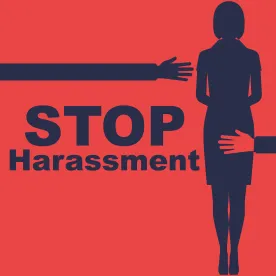The U.S. Equal Employment Opportunity Commission (EEOC) recently released lengthy proposed guidance for employers regarding their compliance with federal antidiscrimination laws that prohibit workplace harassment based on protected characteristics and membership in protected groups.
Quick Hits
- The EEOC’s proposed guidance specifies what features or content the EEOC believes an anti-harassment policy and complaint process should contain to be effective.
- The proposed guidance identifies what effective harassment training should minimally contain.
- The EEOC is accepting comments on the proposed guidance until November 1, 2023.
On September 29, 2023, the EEOC unveiled proposed guidance, “Enforcement Guidance on Harassment in the Workplace,” outlining the agency’s stance on what constitutes an effective anti-harassment policy (notably including potential unlawful harassment based on sexual orientation and gender identity), complaint process, and anti-harassment training, as well as common pitfalls.
According to the EEOC, despite federal laws prohibiting harassment, it continues to be an issue in U.S. workplaces as more than one third of charges filed with the agency from the beginning of fiscal year (FY) 2018 through FY 2022 included an allegation of unlawful harassment.
The 145-page guidance proposal (including 350 footnotes containing significant, more recent case law citations) remains open for comment until November 1, 2023. While employers may wish to review the entire proposed guidance, employers can educate themselves on the EEOC’s stance on what employers’ policies and practices related to harassment should contain.
Employers may also wish to consider auditing and updating their anti-harassment/EEOC policies and training accordingly, as well as incorporating this information in responses to charges filed with the EEOC.
Audit Checklist for Effective Anti-Harassment Policies, Complaint Processes, and Training
According to the EEOC’s proposed guidance, effective anti-harassment policies would minimally contain several features, including the following:
1. A definition of what conduct is prohibited
2. A requirement that supervisors report harassment of which they are aware
3. Offering multiple reporting avenues available during the employees’ working times and other times (e.g., weekends and evening hours)
4. Clearly identifying accessible points of contact to report harassment with contact information
5. An explanation of the complaint process, including the ability to bypass a supervisor (especially one alleged to have engaged in harassment), anti-retaliation and confidentiality protections, as well as any alternative dispute resolution process available
In addition, the EEOC states an effective policy would not only be disseminated widely, but also be comprehensible to employees and “implemented effectively.” The proposed guidance states that effective policies are understandable to employees who speak other languages, have limited literacy skills, or have other barriers to comprehension. For example, according to the proposed guidance, a workplace that employs teenagers should have policies and processes that an average teenager can understand.
An effective complaint process that the EEOC believes should be included in the anti-harassment policy would generally provide for the following:
1. “[P]rompt and effective investigations and corrective action”
2. “[A]dequate confidentiality protections”
3. “[A]dequate anti-retaliation protections”
The proposed guidance cautions against employer-created obstacles to filing complaints, such as undue expense to the employee, inaccessible points of contact, or burdensome requirements. Likewise, employers may want to determine whether employees have access to those who can communicate with them in their language. As to effective investigations, the proposed guidance states investigations are prompt if they are conducted “reasonably soon” after the employer receives a complaint or otherwise becomes aware of possible harassment, but notes that “what is ‘reasonably soon’ is fact-sensitive and depends on such considerations as the nature and severity of the alleged harassment and the reasons for delay.” The guidance goes on to note that an investigation is “adequate if it is sufficiently thorough to ‘arrive at a reasonably fair estimate of truth.’” To do so, the EEOC indicates the investigation “should be conducted by an impartial party and seek information about the conduct from all parties involved.”
Finally, the proposed guidance provides for anti-harassment training to be effective, it would be “tailored to the workplace and workforce,” and provided regularly and clearly. The EEOC proposed guidance states effective training would minimally:
1. Explain the employer’s anti-harassment policy and complaint process;
2. Describe and provide examples of prohibited harassment while also providing examples of “conduct that, if left unchecked, might rise to the level of prohibited harassment”;
3. Provide “information about employees’ rights if they experience, observe, become aware of, or report conduct that they believe may be prohibited”; and
4. Educate supervisors/managers “about how to prevent, identify, stop, report, and correct harassment” with “clear instructions for addressing and reporting harassment.”
The EEOC reiterates the importance of exercising reasonable care to prevent and correct harassing behavior and points to examples of supervisors failing to escalate concerns or stop harassment observed. For example, the proposed guidance cautions employers to take steps “to minimize the known or obvious risks of harassment” such as in “workspaces that are isolated, decentralized, homogenous, or rely on customer service or client satisfaction,” as well as employees who are young, vulnerable, or do not comply with societal stereotypes.
Next Steps
The EEOC formally published the proposed guidance in the Federal Register on October 2, 2023, and is inviting stakeholders to submit comments until November 1, 2023, via the federal government’s e-regulation website here.




 />i
/>i

